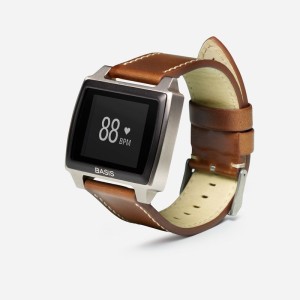 Unanimity among tech users is hard to come by, but a lot of athletes we know are big fans of the Basis Peak fitness tracker. A new software update now lets the Peak share its data with both the Apple Health and Google Fit ecosystems.
Unanimity among tech users is hard to come by, but a lot of athletes we know are big fans of the Basis Peak fitness tracker. A new software update now lets the Peak share its data with both the Apple Health and Google Fit ecosystems.
The Peak is known for the comprehensiveness of the data it collects. By joining with those widely used ecosystems, Basis data can now be tied into data captured by, among others, the popular MyFitnessPal app.
Basis is also releasing a handsome titanium version of its watch with a leather band for $300 — $100 more than the standard Peak.
With the release of the Apple Watch, the matter of ecosystems is becoming particularly interesting. The Watch is not primarily (or perhaps even secondarily) a fitness device; dedicated trackers do a much better job than Apple. It’s an open question whether fitness fans will wear two devices in their daily lives, although we would bet that they won’t (though they may well strap on a secondary device when they go for a run or ride).
We wonder: if the Apple Health and Google Fit ecosystems don’t require iOS or Android Wear on the measuring device, then what’s the functional play for Apple and Google? Data aggregation? That would make sense for Google, which is all about data aggregation. Although Apple is clear about wanting to store your data in the cloud, it hasn’t made many moves about using that data for its own end. So while the Health ecosystem is interesting, it’s still not clear to us why Apple cares — and the more companies that sign onto that ecosystem, the less clear it becomes.